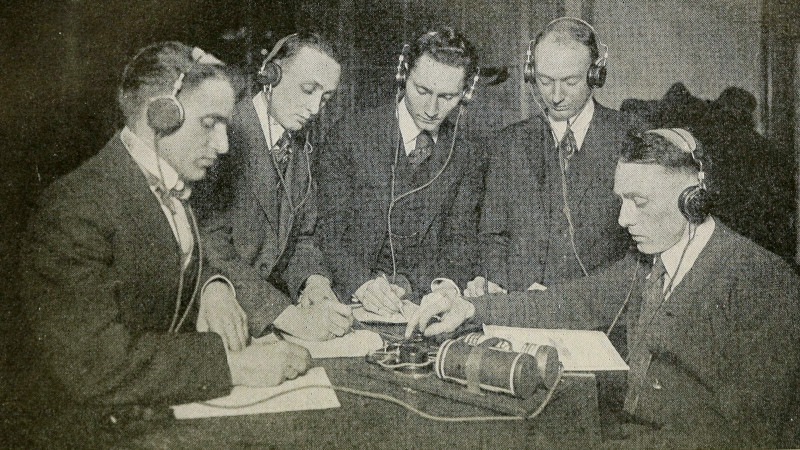For years the Internet Archive has provided the online community with a breathtaking collection of resources, out of print books, magazines, recordings, software, and any other imaginable digital asset in easily retrievable form. Now with the help of a grant from the Amateur Radio Digital Communications Foundation they are seeking to create a collection that documents amateur radio from its earliest days to the present.
The work will be multi-faceted, and include the print and digital materials we’d expect, as well as personal archives and oral histories from notable radio amateurs. For many of us this will provide a wealth of technical details and insights into taming the ionosphere, but for future historians it will be an invaluable reference on the first century of the hobby.
Amateur radio is perhaps the oldest hardware hacking pursuit of the electronic age, because certainly at the start, radio was electronics. Thus amateur radio’s long history has indirectly given us many of the things we take for granted today. Sure it has its moribund aspects, but we think if it continues to follow the growth of new technology as it has for so many years it will continue to be an exciting pursuit. We look forward to browsing this archive, and we hope to see it grow over the years.
Header image: Lescarboura, Austin C. (Austin Celestin), 1891-, No restrictions.

















It’s also something that doesn’t cease to seem indistinguishable from magic.. even if you do understand it!
For me at least :)
The crystal radio I made age 12 was definitely magic – no batteries or power!
Interesting photo. Few people realize how advanced cloning technology was in the early 20th century. It has progressed since then, especially related to ham radio. Now you can go to most any hamfest and see hundreds of near-identical geezers with beards, suspenders and plaid shirts.
Everyone dressed formally back then in public. I was showing someone a book about the Rebel Girl Elizabeth Gurley Flynn, and he saw the photos and commented on the formal dress. If these guys were outside, they’d be wearing hats, too.
Even in the fifties, formal dress reigned.
There was a column about clubs in CQ magazine in the sixties. The columnist in one suggested clubs get uniform shirts, and where them at all club events. I guess informality was setting in.
The novice elder-geek spotter may occasionally mistake a Unix sysadmin for the common Ham; in such circumstances the astute observer may look to see if the Beardy-Weerdy carries a copy of ‘the Stevens book’, or variously some other tome, the cover of which may be adorned with a woodcut print or some curious creature, and words such as ‘sed’ or ‘awk’. These species may also be discerned by their habit; whereas the Ham, gregarious by nature, tends to be found in flocks, a solitary specimen is more likely to be the Unix Sysadmin, especially when the loner is seen to come and go through an unmarked and otherwise unremarkable door into a darkened space.
https://worldradiohistory.com/
I know it’s been mentioned on HaD before (at least in the comments section) and many of us already know it but for anyone who might have missed it this seems to be a good spot to mention worldradiohistory.com. (no, I’m not affiliated w/ them)
Besides having a lot of archived radio history (including broadcast, not just ham) they have scans of a huge chunk of the old electronics project magazines that were big back in the pre-internet days. Of course that material is pretty dated now but there is still relevant theory and no doubt many projects in there that could be built today or serve as inspiration for a more modernized project.
Use with your own discretion though. I’m not sure if they managed to get copyright permission or if this is a pirate site or what. I’d love to hear from someone who knows more about that. My understanding was getting permission to reproduce those old magazines was next to impossible. Even if you did manage to figure out who owns the copyright on the magazines decades after their publishers went into bankruptcy they can’t help you. The individual articles were owned by their independent authors, many of whom are either in nursing homes somewhere or already passed. You would be tracking down a whole lot of next-of-kin.
To send good information, all the documents of radio and electronic schemes are on internet, and on the pirates websites via the direct download… And for minimum 10 years ago….
Nope. Lot’s of information is still missing. It’s an illusion to believe that the internet is the final answer to everything and that everything is available on our finger tips yet. That’s what the article essentially states.
Especially German books and schematics (-or foreign language material in general-) is still scarcely available by comparison. The good stuff, in other words, hi. ;)
Seriously, though, some historic terms like “Wellensummer” aren’t even really indexed by search engines.
Remember, some early books and magazines were merely self-published. And in small quantities.
In such a case, there’s no publisher that could be casually asked for an old issue or a copy.
If no copy of private origin survived in a chest on an attic, it’s gone. Just gone. Forever. That’s real life, my friend. And not even the internet can change this fact.:
Let’s remember the library of Alexandria..
A centralized archive isn’t wise without having local backups. Not only because of eventual server problems, but also because there’s always the possibility of censorship. Historic material must be allowed to be saved locally, renting isn’t enough. vy73 everyone